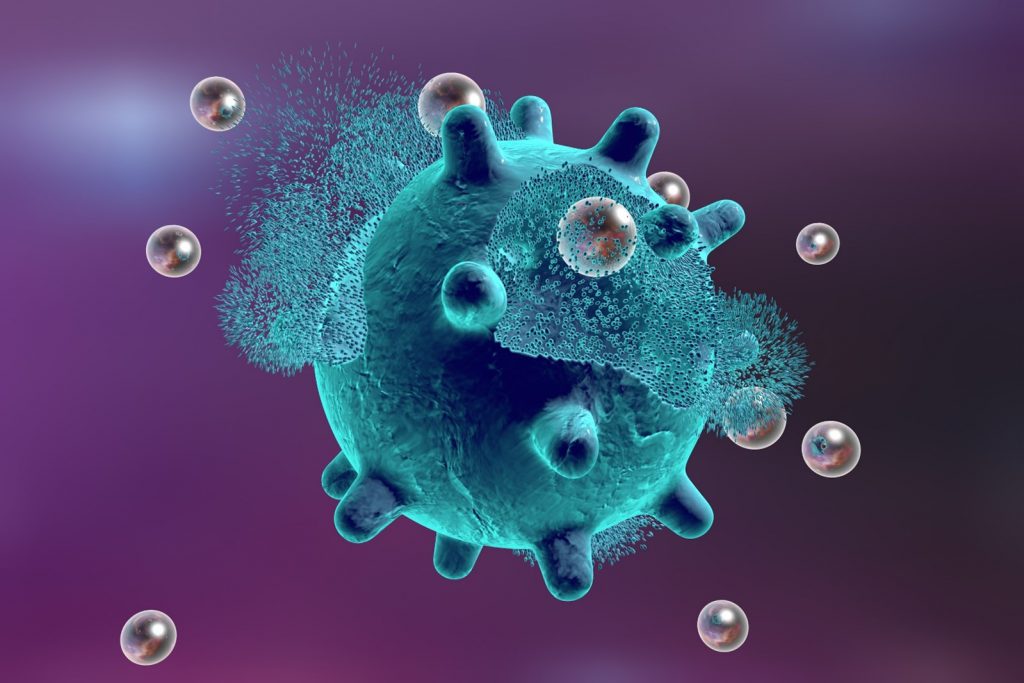
Microplastics (such as polystyrene particles), which are small plastic particles, films, fragments, pellets, and textile fibers, are the main carriers that cause environmental pollution. Microplastics, whose particle sizes range from a few microns to a few millimeters, are inhomogeneous plastic mixtures with various shapes. They are often difficult to distinguish with the naked eye, and are vividly called “PM2.5 in the sea”. For example, polystyrene particles are small in size with a higher specific surface area. The larger the specific surface area is, the stronger the ability to adsorb pollutants is. Polystyrene particles are like the “cars” of pollutants, and polystyrene particles adsorbing pollutants can wander around the environment. In 2014, at the first United Nations Environment Programme, marine plastic litter was listed as one of the top ten urgent environmental problems, and special attention was paid to microplastics. In the next year, microplastic pollution was listed as the second-largest scientific problem in the field of environmental and ecological science and became a major global environmental problem alongside global climate change and ozone depletion.
Source of microplastics
Microplastics come from a wide range of sources, including a variety of plastic packaging, products, mulch used in agricultural production, and so on. These waste plastic products are exposed to the natural environment and are slowly decomposed under the combined action of weathering and biodegradation. But they can not be completely degraded, they will become smaller gradually into microplastics.
In addition, plastic particles are usually added to personal care and cosmetics as abrasives in exfoliators. These microplastic particles are so small that they can float on the surface of the water, and the city’s wastewater treatment system cannot deal with them at all. Since they cannot be decomposed, after leaving the system freely, they can enter other environmental systems.
Moreover, the fine fibers that release from the clothing during washing are also an important source of microplastic fibers. Scientists simulated the household washing process and found that washing an average of 6 kg of synthetic material clothing could release an estimated 137,951 fibers from polyester-cotton blend fabric, 496,030 fibers from polyester, and 728,789 from acrylic. The fabric can also produce some microplastic fibers in the process of daily use or wear. The plastic masterbatch leaked by the plastic products factory and the wear of automobile tires will also produce a large number of microplastics. Through precipitation, runoff, and municipal sewage, microplastics migrate, aggregate, and accumulate in various environmental media.
Microplastics on the dining table
The smaller the size of microplastics, the more likely they are to be eaten by organisms. Microplastics with low density are more likely to be eaten by aquatic organisms, while zoobenthos is more likely to eat microplastics with higher density. Scientists estimate that about 690 species of marine life are affected by plastics, of which at least 10% ingest microplastics. At present, microplastics have been found in the intestines and tissues of many aquatic organisms. At this stage, organisms that have eaten microplastics include plankton, shellfish, and fish, and the range is constantly expanding. Some studies have shown that the ingestion of microplastics by aquatic organisms will first cause physical damage to the organisms themselves. These microplastic fragments and fibers which are eaten by organisms cause mechanical wear and blockage to the digestive system of aquatic organisms by winding and wearing the digestive tract of feeding organisms. Mechanical wear and blockage of the digestive system will reduce the food intake of aquatic organisms, produce a sense of pseudo-satiety, etc., and eventually lead to aquatic organism’s hunger and even death.
Microplastics not only carry their own toxic substances but also absorb a large number of chemical pollutants such as heavy metals and organic pollutants into organisms from the surrounding environment, thus causing certain toxicological effects on organisms. Because microplastics are not easy to degrade and have a light texture, they are easily moved in the food chain, exposing more animals to harmful substances.
Potential toxicological effects of microplastics on human cells In order to investigate the potential toxicological effects of microplastics on human cells, Goodman et al. exposed cultured human alveolar A549 cells to polystyrene microplastic (PSMP) with diameters of 1 and 10 μm. Cell viability was determined by trypan blue staining and Calcein-AM staining. It was found that both polystyrene particles of these two sizes caused a significant decrease in cell proliferation but showed little cytotoxicity. Even if the concentration of PSMPs was as high as 100 μg/mL, the cell survival rate did not drop below 93%. Despite this high survival rate, further tests showed that the decline in the population level of cell metabolic activity paralleled the sharp decline in the rate of proliferation in cells exposed to PSMP. In addition, the phase contrast imaging of living cells at 72 h showed that the cell morphology changed significantly under the action of microplastics. This is the first report of exposure of human cells to an environmental contaminant resulting in the dual effects of inhibition of cell proliferation and major changes in cell morphology. Their results show that human exposure to microplastic pollution has significant consequences and potential harm.
References:
Napper, I. E., & Thompson, R. C. (2016). Release of synthetic microplastic plastic fibres from domestic washing machines: Effects of fabric type and washing conditions. Marine pollution bulletin, 112(1-2), 39-45.
Goodman, K. E., Hare, J. T., Khamis, Z. I., Hua, T., & Sang, Q. X. A. (2021). Exposure of Human Lung Cells to Polystyrene Microplastics Significantly Retards Cell Proliferation and Triggers Morphological Changes. Chemical Research in Toxicology.
